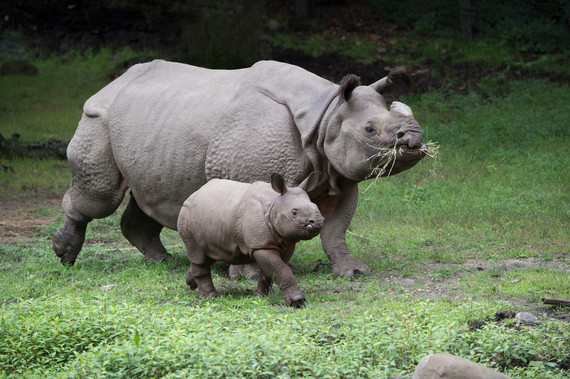Each year, the U.S. Fish and Wildlife Service provides funding appropriated by act of Congress for targeted international conservation projects to protect several of our most iconic and endangered species: Asian and African elephants, tigers, rhinos, great apes, and marine turtles. These funds for these programs, modest by government standards (approximately $10 million per year), provide critical support to maintain populations of species that might otherwise perish.

The Save Vanishing Species stamp, issued in September 2011 by the U.S. Postal Service and featuring a tiger cub illustration, helps to protect species like elephants, tigers, and great apes.
For two years until last fall, American citizens were able to contribute directly to this effort in a small but meaningful way: by mailing a letter. By using a Save Vanishing Species postage stamp to send a greeting card, wedding invitation, or utility bill, anybody concerned about the plight of our most threatened species could toss a dime into the jar. Since the stamp costs a few cents more than the standard first-class postage of 49 cents, that extra change goes directly to the international conservation programs funded by the U.S. Fish and Wildlife Service. The stamp follows the model of the highly successful Breast Cancer Research stamp.
The stamp program has been a complete win-win: fiscal hawks love its budget-neutrality; conservationists love the end result of more help for endangered wildlife. Unfortunately, the stamp program expired at the end of September 2013 and will not return if Congress does not act to save it.

Indian rhinos, like the ones pictured here, are designated as "vulnerable" by the International Union for Conservation of Nature (IUCN) and as "endangered" by the U.S. Fish and Wildlife Service. Photo by Julie Larsen Maher © WCS
Despite robust sales, the Congressional committees tasked with reauthorizing the stamp beyond its original two-year lifespan have not done so. Though passionate champions on both sides of the political aisle - notably Rep. Michael Grimm (R-NY), Rep. Pedro Pierluisi (D-PR), Sen. Rob Portman (R-OH), and Sen. Tom Udall (D-NM) - have fought to save this unique conservation program from extinction, it languished far down on Congressional to-do lists.
The great news is that renewed efforts by these Congressional champions to bring back the stamp are making progress this year. Both the House and Senate have passed legislation that would bring back the stamp for another four years, but the two sides must hammer out differences in the bills before they can be signed into law before this session of Congress ends. We need this to happen before the end of the year.
 Gorillas are the largest and most vulnerable of humankind's closest great ape relatives. They face three grave threats: bushmeat hunting, habitat destruction, and infectious diseases like ebola. Photo by Julie Larsen Maher © WCS
Gorillas are the largest and most vulnerable of humankind's closest great ape relatives. They face three grave threats: bushmeat hunting, habitat destruction, and infectious diseases like ebola. Photo by Julie Larsen Maher © WCS
Raising more money to help much endangered wildlife by engaging ordinary Americans who wish to make a difference is what makes the Save Vanishing Species stamp so unique. Rather than placing the fate of these vital projects in the hands of just a few powerful people, the stamp showed how much more money could be raised through the combined impact of the many conservation-minded citizens across our nation.
So far, that impact has been considerable. Since its debut in September 2011, the program has raised more than $2.5 million from the purchase of 25.5 million stamps for a wide range of conservation projects. Most importantly to our representatives in Congress who must navigate regular budget battles, those additional funds came at no taxpayer expense.
 There are approximately 350-400 adult Amur (or Siberian) tigers left in the wild, with 95 percent of these individuals inhabiting the forests of the Russian Far East. ©WCS Russia Program
There are approximately 350-400 adult Amur (or Siberian) tigers left in the wild, with 95 percent of these individuals inhabiting the forests of the Russian Far East. ©WCS Russia Program
This should be an easy one for Congress to get right. We saw the way that the stamp has galvanized support for conservation from the American people for two years. Congress must now work to prevent the extinction of this fiscally responsible funding source for the world's most iconic species by reauthorizing the Save Vanishing Species stamp for another four years. Soon, the tiger stamp should once again empower people to take their own action to save wildlife by simply mailing a letter.
